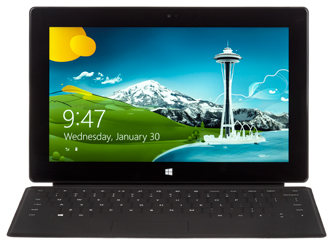


Well, that's true of the Intel-based models, at least. Both of which support Thunderbolt 4 and USB 4.0, as they did on the Surface Pro 8. The IO is mostly the same, consisting of Microsoft's proprietary Surface Connect port and two USB-C ports. Surface Pro 8 colours: Graphite, PlatinumĪs we mentioned in the introduction, the design has remained essentially the same with the latest generation of Surface Pro.Surface Pro 9 colours: Sapphire, Forest, Platinum, Graphite.Both: 287 x 208 x 9.3mm / 2x USB-C with Thunderbolt 4, Surface Connect port.The upshot? Because of its pricing, I don't expect the Surface Pro to be a winner.We've dug into the specs and uncovered what's new with the latest Surface tablet. And in a BYOD world, there's no reason to choose a Windows-based tablet over an iPad. There's another problem with aiming the Surface Pro at the enterprise market: Enterprises aren't particularly keen on Windows 8 at the moment because it breaks so significantly with past versions of Windows. Enterprises can an buy Windows 8 notebooks or even ultrabooks for less money. But at more than $1,000 that's a steep price to pay. One benefit of the Surface Windows 8 Pro over the RT-based Surface is that because it runs Window 8 rather than RT, it will run desktop apps, which the RT-based Surface won't do. This is an enterprise play, not a consumer play, at least for now." "The Surface Pro pricing leaves room for device makers to come down in price without compromising margins too much. And some analysts believe that Microsoft set the prices so high not in order to sell a lot of them, but to allow its competitor's prices to seem like bargains, and so help them sell plenty of those.Ĭarolina Milanesi, an analyst at Gartner, told Computerworld: At these prices, Surface Windows 8 Pro tablets are clearly aimed at enterprises, not the consumer market. You can buy an iPad for $499 (with 16 GB only it costs $599 for the 32 GB model, and $699 for the 64 GB model.) So why would you want to pay more than $1,000 for a Surface tablet?


 0 kommentar(er)
0 kommentar(er)
